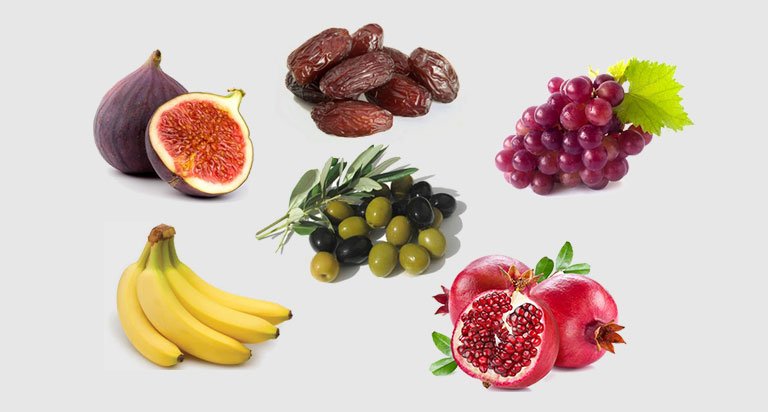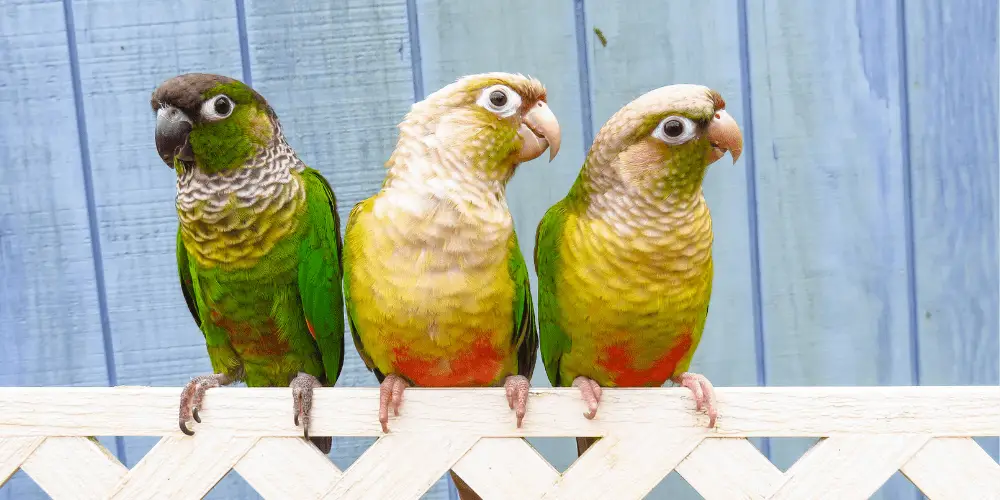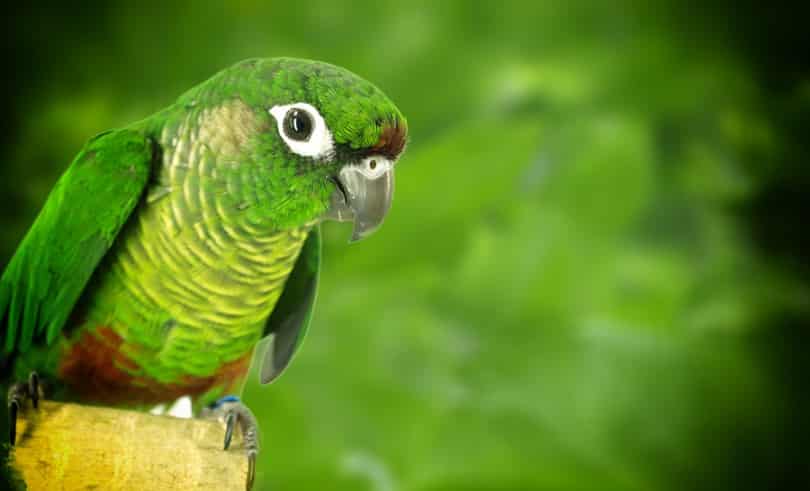Turquoise Green-Cheeked Conure
Turquoise Green-Cheeked Conure is a small bird that has a blue face and two red cheeks. It is part of the genera Psittacula, which is in the parrot family. The genus name “Psittacula” means “parrot of the sky”.
The species name “turquoise” refers to its blue coloration and to the intense coloration of its breast feathers. This bird belongs to the genus “Psittacus”, which means “parrot”.
The species name “green-cheeked” refers to the bright green coloring on its head and on the cheeks. The scientific name for this bird is Psittacus rubeola, which means “reddish green-cheeked parrot”.
Origin and History of Turquoise Green-Cheeked Conure
Conure is a genus of birds that have been around for over 300 million years. They are native to the Americas and have evolved into a wide variety of different species.
The origin of the turquoise-green-cheeked conure is not known. It has been found in the fossil record in China, Australia, South America, and North America.
Turquoise green-cheeked conures are found in several different habitats across Australia and New Zealand with some species being restricted to coastal areas or islands.
They mainly live on small islands such as New Zealand’s Chatham Island, Stewart Island, and Stewart Island off the coast of New Zealand. The island has a large number of endemic bird species including turquoise green-cheeked conures which are found on this island only .
Their diet consists mainly of insects such as grasshoppers, beetles, moths, and spiders but also includes fruits such as figs, berries, berries, lizards, frogs, etc
Turquoise green cheek conure lifespan
Conures are a type of parrot that is native to South America. They are named after their bright green color. Conures have a lifespan of up to 15 years, but some species live longer than that.
Turquoise Green Cheek Conure has a lifespan of up to 15 years, and it is one of the longest-lived birds in the world. It has been observed that the birds can live for over 20 years in captivity, with some individuals living for more than 50 years!
Turquoise green cheek conure diet
The diet of turquoise green cheek conure is very simple: it eats fruits such as figs, bananas, and grapes. The birds also eat insects such as beetles, grasshoppers, and caterpillars.
The birds consume about 20% of their body weight every day during the breeding season (March to May). During this period they are very active but are often calm during the rest period (May to June).
Turquoise green cheek conure price
A conure is a small bird that looks like a cross between a parrot and a macaw. It is native to the tropical forests of South America.
The price of turquoise green cheek conure varies from $1,000 to $3,000 depending on the locality. They are also commonly known as “blue-green cheek” or “blue-green cheeked” conures because of their coloration.
Do Turquoise Conure Talk?
In the last few years, turquoise conure has become a popular pet. This is because of its color and the fact that it can talk. Because of this, it has also been dubbed a “talking bird”.But there are some people who are worried about this.
Some people who have seen these birds in the wild think that they might not be able to talk because they don’t have a vocal cords (like humans do). But there is another theory that says that turquoise conure do talk but their speech is not like human speech.
Types of Green-Cheeked Conure Mutations
This is a short introduction to mutation mutations in the green-cheeked conure, a type of parrot that has an unusual mutation.
Green-cheeked Conure Mutations (GCM) are mutations in the genetic code of parrots. They are very rare and can be identified only by DNA testing. GCM mutations have been described in parrots with similar skin coloration, such as the green-cheeked conure and the white-crowned conure.
GCM mutations are not found in other parrot species, even though they occur in all bird species within a family and may be inherited from one parent or both parents.
This is because GCM mutations affect only genes that encode proteins involved in pigment production, which are found on all birds’ skin cells regardless of their coloration.
Yellow-Sided Green Cheek Conure
The yellow-sided green cheek conure is a very cute and amusing bird. It is also very popular among pet owners. People who own these birds often have them sitting on their shoulders or on their laps.
According to “The Guardian”, the yellow-sided green cheek conure was first described in 1864 by William Swainson, an American naturalist, who named it “Cyanoliseus cyanoliseus” (Swainson). The name comes from the color of its cheeks, which are a shade of blue or light grey.
This bird was not included in any major taxonomic work until 1998 when it was rediscovered by Simon Conway Morris after he made a study of the bird’s distribution and breeding range in the wild.
Cinnamon Green Cheek Conure
Cinnamon Green Cheek Conure is a type of parrot. It has yellow and green in color. It has been used in the past as a pet, but it is also used as an exotic pet. People are interested in this species because they can be trained to do many things such as flying and swimming.
The Cinnamon Green Cheek Conure is a popular pet in the Philippines. It is one of the most beautiful and rare birds in the world. They were brought to the Philippines from Europe in 1840. The bird has long been considered a symbol of beauty, elegance, and grace by Filipinos.
Pineapple Green Cheek Conure
Pineapple Green Cheek Conure is a green cheek conure. It is one of the great birds in the world and has been used for centuries as a symbol of friendship and good luck.
In ancient times, people believed that the bird was able to tell you if someone was sincere. They were also believed to be able to predict the future, so they were often used as lucky charms.
How long can a conure be left alone?
Being sociable creatures, parrots are uncomfortable when left alone. They require interaction and human contact for at least two hours each day and cannot be left alone for longer than six or eight hours at a time. Spend enough time with your bird so it sees you as a close friend and a member of its flock.
Are green cheek conures high maintenance?
The green-cheeked conure is viewed by some as a demanding pet. The answer is yes if you lack the time to satiate your pet’s need for attention or to take it to the clinic frequently. Besides that, if you don’t provide it with foraging toys, it will chew a lot and become aggressive.
Do green cheek conures poop a lot?
The green cheek conure is one of the most popular parrot species in aviculture. It was brought to the United States in the 1890s by Charles A. Lindbergh and is now a popular pet.
The green cheek conure has a very interesting poop pattern, which consists of alternating solid and liquid feces, with solid feces being deposited on one side of the body and liquid feces on the other side.
The poop pattern is called “green” because it resembles a grassy field or an untended lawn. When they poo, they do so in a very distinctive way: they expel their waste at high speed and then fly off into space as if it were nothing more than air.






